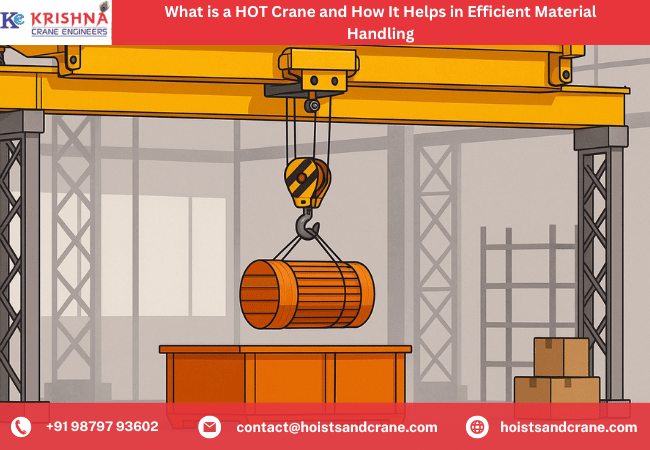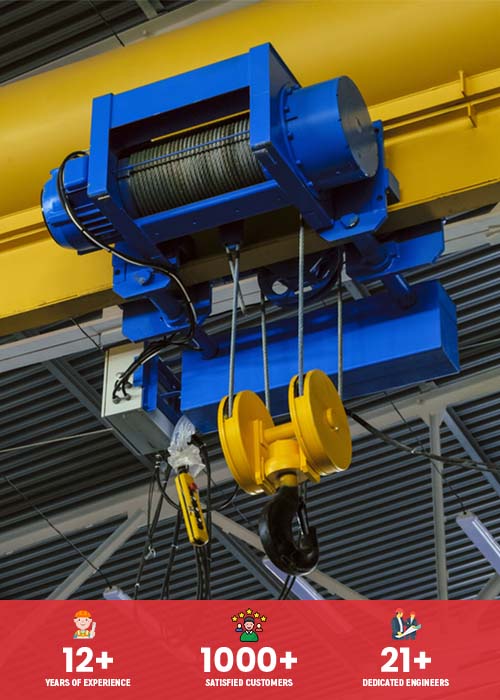What is a HOT Crane and How It Helps in Efficient Material Handling
In industrial and manufacturing environments, the safe and efficient movement of heavy materials is crucial. One piece of equipment that plays a vital role in this process is the HOT crane. The HOT crane full form is Hand Operated Travelling Crane, and it is widely used for lifting and transporting heavy loads within a factory or workshop. This crane type is designed for smooth material handling, ensuring safety, speed, and precision in operations. Whether in a large-scale manufacturing unit or a medium-sized industrial workshop, HOT cranes have become a go-to solution for improving productivity and reducing manual effort.
Understanding a HOT Crane
A HOT crane is a type of overhead crane that operates on a fixed beam or structure. It uses a hoist that travels along the bridge to lift and move loads horizontally. The crane is typically operated manually or with the help of electric controls, depending on its design. While modern variations may include more advanced features, the fundamental function remains the same which is to transport heavy objects from one point to another without the need for multiple handling steps.
The design of a HOT crane includes a bridge, end carriages, a hoist, and a trolley system. These components work together to provide flexibility in movement, allowing operators to reach different areas of the workspace. The durability of HOT cranes makes them suitable for continuous operations, especially in manufacturing units where heavy material handling is a daily requirement.
How a HOT Crane Improves Efficiency in Material Handling
Material handling is not just about moving goods but is about doing it with precision, safety, and minimal time wastage. A HOT crane significantly contributes to efficiency in the following ways:
- Reduces Manual Labor
In industries that deal with heavy raw materials or finished products, manual lifting can be slow, risky, and physically exhausting. A HOT crane eliminates the need for workers to carry or drag heavy loads, reducing physical strain and the possibility of workplace injuries.
- Saves Time in Operations
Since a HOT crane can transport large and heavy materials across the workspace in a single movement, it speeds up the material handling process. This reduced handling time translates into faster production cycles and better overall efficiency in operations.
- Enhances Safety Standards
Safety is a top priority in any industrial setup. By using a HOT crane, operators can move materials without having to navigate crowded floors or handle unstable loads manually. This lowers the risk of accidents and damage to goods.
- Improves Accuracy in Load Placement
The hoist and trolley system in a HOT crane allow precise placement of materials. This is especially beneficial in assembly lines or when positioning materials for further processing, where accuracy is key to product quality.
- Increases Workspace Organization
Since the crane operates overhead, it leaves the floor space free from unnecessary equipment and obstructions. This improves the organization of the workspace and allows other operations to run smoothly without interference.
Why Industries Prefer HOT Cranes
The popularity of HOT cranes in material handling stems from their reliability, costeffectiveness, and adaptability. Compared to more complex automated cranes, HOT cranes are easier to install, maintain, and operate. For industries that do not require continuous high speed automation, a HOT crane offers an ideal balance between performance and affordability.
Moreover, a HOT crane is built to last. Made from robust materials, it can withstand heavy usage in demanding environments. Regular maintenance ensures that the crane continues to deliver optimal performance over many years, making it a valuable long-term investment for industrial operations.
Modern Enhancements in HOT Cranes
While the traditional HOT crane was purely hand-operated, advancements in technology have led to the development of electrically operated versions. These modern designs allow operators to control the crane remotely, reducing physical effort and increasing precision in operations. Additional features like variable speed control, load sensors, and automated safety systems have further improved the functionality and safety of HOT cranes.
Many industries are also integrating their HOT cranes with modern inventory management systems, enabling them to track material movement in real time. This not only enhances operational transparency but also improves decisionmaking regarding production and storage.
Conclusion
In today’s competitive industrial environment, efficiency in material handling can make a significant difference to overall productivity. The HOT crane stands out as a reliable, durable, and cost-effective solution for industries that need to move heavy loads safely and efficiently. From reducing manual labor to improving load placement accuracy, this equipment addresses multiple challenges in material handling. As long as it is used correctly and maintained regularly, a HOT crane can serve as a trusted partner in streamlining industrial operations for many years to come.




